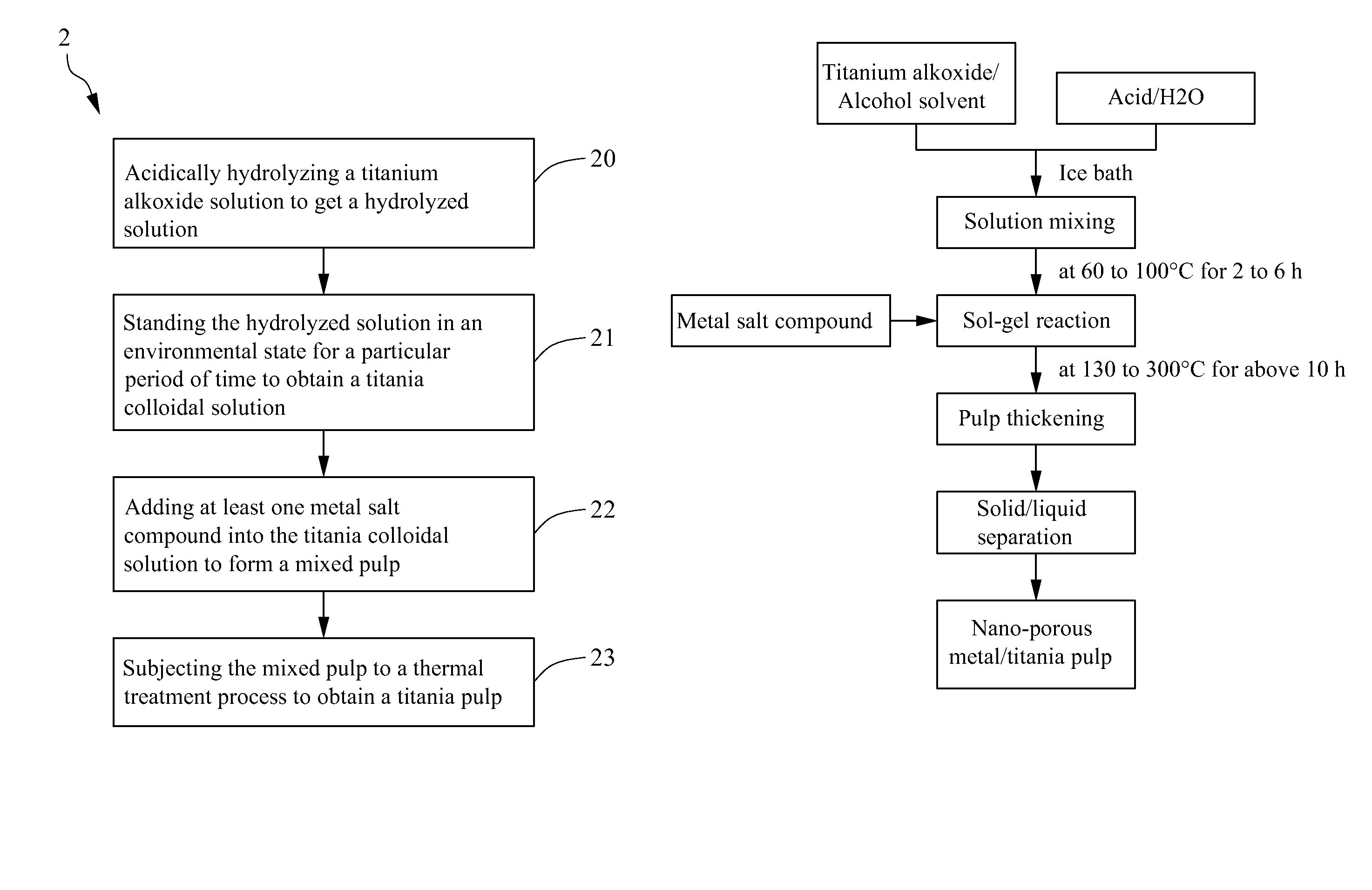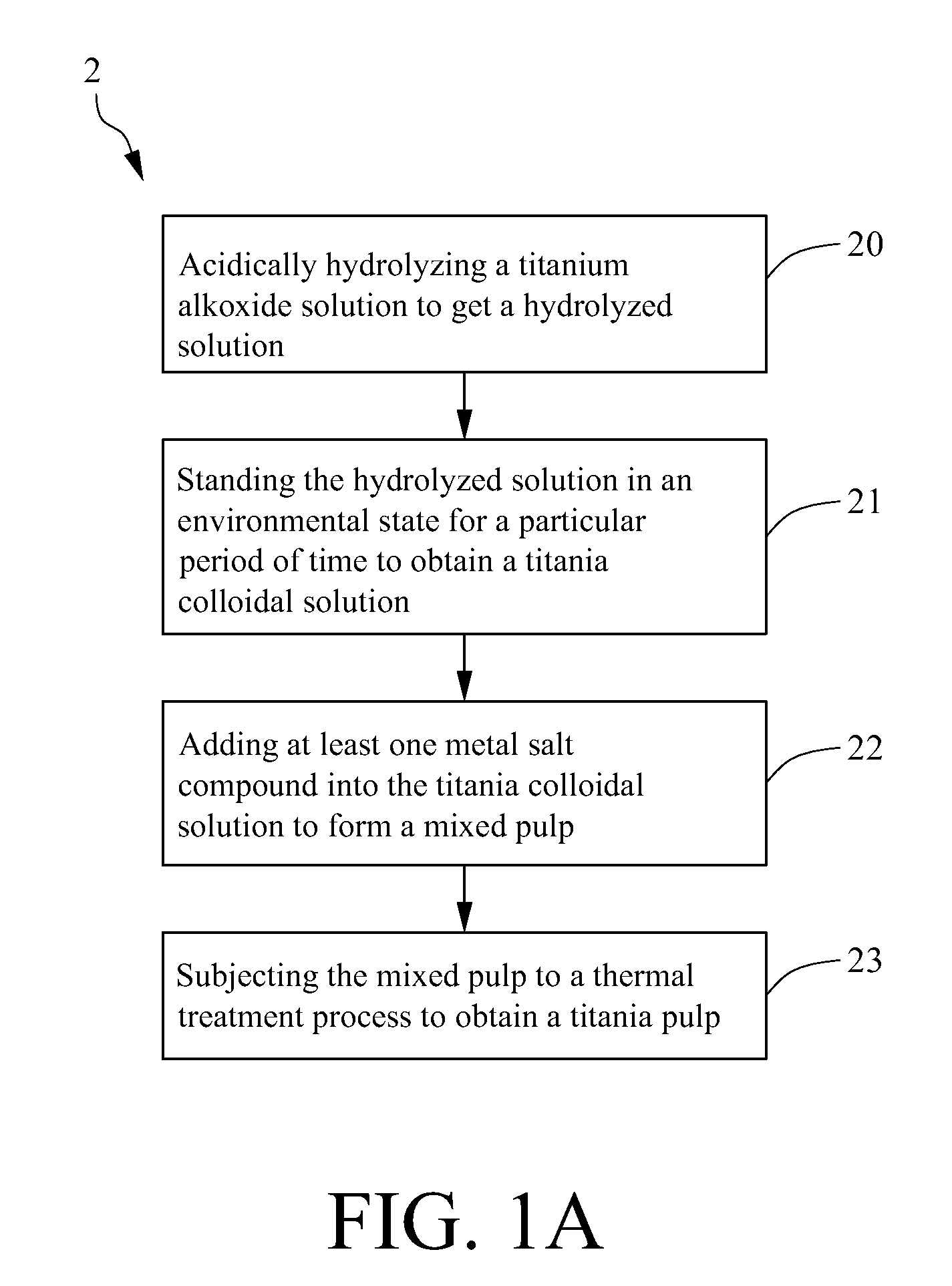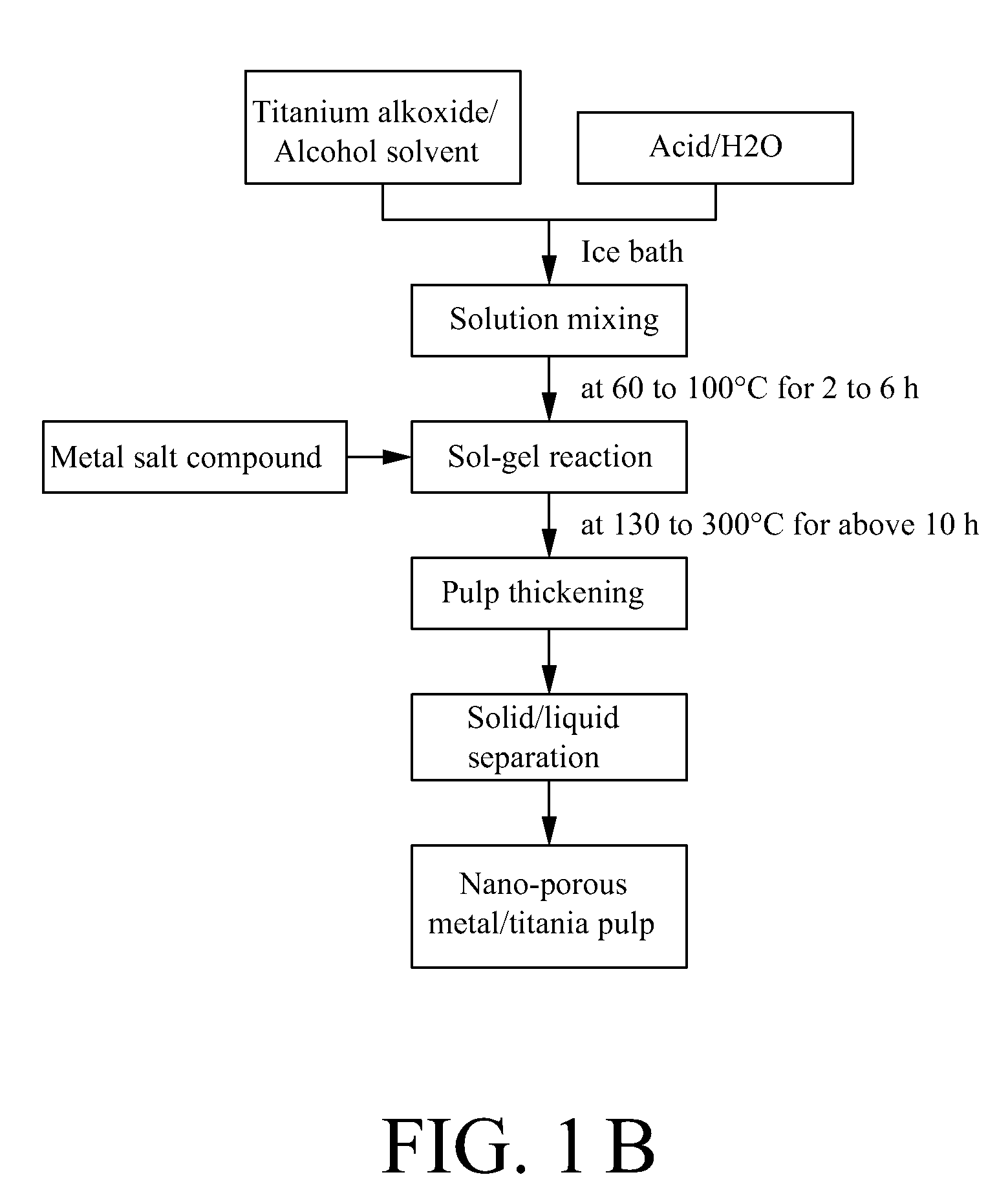Method for making metal/titania pulp and photocatalyst
a technology of titanium pulp and photocatalyst, which is applied in the field of making metal/titania pulp and photocatalyst, can solve the problems of limiting the application of titanium powder, difficult to separate the nano-titania particles suspended in the solution from the aqueous, and low binding strength between metal ions and titania powder, so as to achieve the effect of improving the production effect of hydrogen energy by decomposition of water and solar light or uv ligh
- Summary
- Abstract
- Description
- Claims
- Application Information
AI Technical Summary
Benefits of technology
Problems solved by technology
Method used
Image
Examples
example 1
Preparation of Mono Metal / Titania Pulp
[0029]As shown in FIG. 1B, it is a schematic flow chart for making a mono metal / titania pulp in practice according to the scheme of FIG. 1A of the present invention. Firstly, 10 ml of iso-propanol was mixed with 37 ml of titanium ethoxide and placed into a 100 ml dropper. In addition, 80 ml of acetic acid was mixed with 250 ml of distilled water and placed into a 500 ml flask, which was then placed in a thermostatic bath with a temperature set at 5° C. Under nitrogen atmosphere, the mixed solution in the dropper above was dripped into the flask at a controlled rate of about two drops per second for 1 h with stirring at a constant rate. The titrated solution would appear clear, and if there were suspended substances, stirring was continued till a transparent solution was obtained. The titrated solution was placed into a thermostatic bath of 80° C. for 3 h, taken out and cooled, and then 1 g of AgNO3 or another metal salt was added and mixed homog...
example 2
Preparation of Bismetal / Titania Pulp
[0031]In this example, a same scheme as that in Example 1 for making titania pulp was used, except that in the reaction process, two different metal salts were added together. 10 ml of iso-propanol was mixed with 37 ml of titanium ethoxide and placed into a 100 ml dropper. In addition, 80 ml of acetic acid was mixed with 250 ml of distilled water and placed into a 500 ml flask, which was then placed in a thermostatic bath with a temperature set at 5° C. Under nitrogen atmosphere, the mixed solution in the dropper above was dripped into the flask at a controlled rate of about two drops per second for 1 h with stirring at a constant rate. The titrated solution would appear clear, and if there were suspended substances, stirring was continued till a transparent solution was obtained. The titrated solution was placed into a thermostatic bath of 80° C. for 3 h, taken out and cooled, and then 1 g of H2PtCl6 and 1 g of AgNO3 were added and mixed homogene...
example 3
Comparison of Photocatalytic Effect of Metal / Catalyst Pulp by High Temperature Calcination
[0034]A same method as that in Example 1 was used to prepare a La / titania pulp, with exceptions that LaNO3 was used in place of AgNO3 as metal salt. The prepared La / TiO2 pulp was washed with iso-propanol to remove residual impurities, then the remaining pulp was naturally dried in air (or evaporated to dryness with a water bath), taken out, placed into a mortar and ground into a powder (or ground into a powder with stirring in drying). Next, the ground powder was divided into two portions, one was directly stored for use, and an other was calcinated for 2 h in a high temperature oven of 400° C. and then cooled to room temperature; and a particle size analysis showed that a mean particle size of the two portions each was 50 to 250 nm. 0.05 g of the uncalcinated and calcinated La / titania powders above were separately added into 50 ml of 0.2 M solution of KI in water, and ultrasonated for 5 min in...
PUM
| Property | Measurement | Unit |
|---|---|---|
| temperature | aaaaa | aaaaa |
| temperature | aaaaa | aaaaa |
| molar ratio | aaaaa | aaaaa |
Abstract
Description
Claims
Application Information
 Login to View More
Login to View More - R&D
- Intellectual Property
- Life Sciences
- Materials
- Tech Scout
- Unparalleled Data Quality
- Higher Quality Content
- 60% Fewer Hallucinations
Browse by: Latest US Patents, China's latest patents, Technical Efficacy Thesaurus, Application Domain, Technology Topic, Popular Technical Reports.
© 2025 PatSnap. All rights reserved.Legal|Privacy policy|Modern Slavery Act Transparency Statement|Sitemap|About US| Contact US: help@patsnap.com



